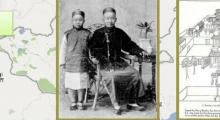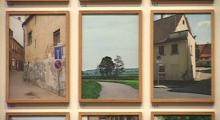Suburban synagogues were the primary markers of the vitality of Jewish life after World War II. In the twenty-first century, Jewish museums have supplanted synagogues as the most visible symbol of the American Jewish landscape. Susan G. Solomon, author of Louis I. Kahn's Jewish Architecture: Mikveh Israel and the Midcentury American Synagogue, discusses the innovative ways in which two influential architects, Louis I. Kahn in the 1960s and Daniel Libeskind in the twenty-first century, tried to instill Jewish institutions with specific meaning while remaining true to Modernism's goal of avoiding excessive decoration. Solomon also explores how both architects' buildings encouraged human interaction, despite their unique, highly personal conclusions about Jewish meaning.
Comments
Brought to you by THECJM






